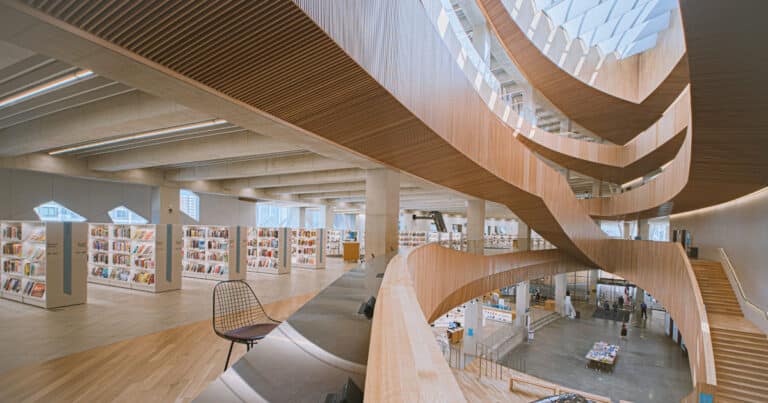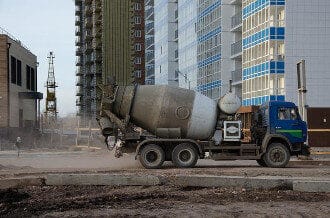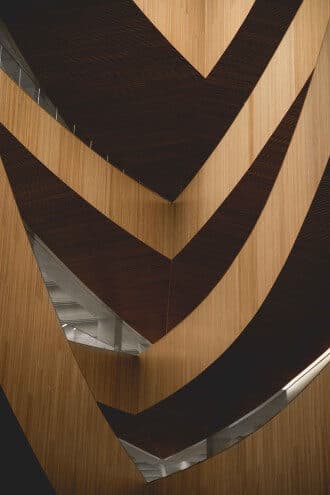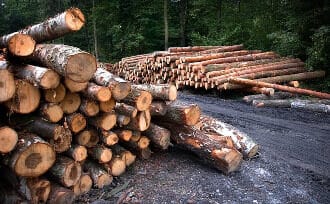By Harry Cooper – As the global population has increasingly grown over the past century and the world continues to industrialize, cities have started to build bigger and better buildings and infrastructure. The problem with this continual expansion is that it uses up large amounts of resources and produces greenhouse gas emissions.
Many people have espoused that in order to fix problems such as this, we need a more sustainable method of construction development. One such way people are trying to bring sustainability into the construction industry is by replacing environmentally harmful building materials with more sustainable ones. As we’ll soon see, mass timber is a great construction material that addresses the three pillars of sustainability: social, environmental and economic.
What is Mass Timber?
One such building material is wood. While wood has historically been too weak and flammable to be used extensively in modern construction, mass timber building techniques are allowing wood to be used as the primary building material in large scale construction projects. Mass timber, “massive timber”, is a method of building whereby wood is bonded together in layers to create strong and sustainable structural elements. It is a building method that cuts building costs while simultaneously reducing carbon emissions from the construction industry.
There are many concerns with this construction type and mass timber buildings; how sturdy are these tall wood buildings? How does this affect deforestation? These are important things to consider when implementing mass timber construction. However, many new technologies have been continuing to make mass timber more sustainable.
Issues With Modern Construction
The current construction industry consumes massive amounts of raw materials. In fact, it is estimated that the construction industry in the US consumes around 75% of all raw materials produced. This becomes a significant environmental issue as these materials are not always used in the most ecologically friendly ways.
Concrete and Steel
The two materials that are most prominently used in construction are concrete and steel. These two materials require massive amounts of energy at every stage of production; extraction, refinement, transport, and construction. This energy intensive process makes producing steel and cement responsible for 10% of total global carbon emissions. While this has contributed significantly to global warming, there have been few alternatives to concrete and steel construction until recently.
The Solution of Mass Timber
Because concrete and steel are such durable materials, for a long time it was hard to imagine such large heavy buildings being made out of anything else. However with the advent of mass timber, large wood structural systems and heavy timber buildings are becoming a real possibility.
Smaller Carbon Impact
These mass timber structures have a considerably smaller environmental impact than steel and concrete buildings. While buildings usually require a lot of energy and carbon to get built, mass timber buildings can actually store carbon away. When trees grow, they take up carbon from the atmosphere and store it in their wood. When this wood gets taken to be used in wood construction, the carbon stays stored in the wood until the building is destroyed or burned down.
Concerns over Mass Timber
While mass timber has the capacity to make our construction and our society much more sustainable, many have concerns over the structural integrity or flammability of these taller mass timber buildings. However, mass timber is still an emerging field, and advances in technology have made mass timber incredibly durable and viable as a construction material.
Mass Timber Technology
Mass timber first became a possibility with the invention of cross laminated timber (CLT) in 1990s Austria. While it slowly spread in popularity throughout Europe in the 2000s, as mass timber is becoming cheaper and cheaper, it is currently spreading in popularity across the world.
Cross Laminated Timber
In order to make wood capable of supporting large structures, the wood must be cut into specific shapes and patterns to facilitate such a large weight. Certain techniques such as dowel laminated timber and nail laminated timber allow the wood to be just as structurally sound as concrete or steel, but the original and most common of these techniques is cross laminated timber.
More Structural Integrity
CLT gets its structural soundness from laying wood planks in layers with perpendicular gradients between each layer. Once the planks are layered in this way, they are then glued or nailed together to make a durable panel of wood.
CLT can be just as strong as concrete or steel. These large structural panels are then used in mass timber projects where they can support massive amounts of weight.
Fire Resistant
Another advantage of CLT is that they are surprisingly fire resistant. While historically wood buildings have enabled large fires in many different parts of the world, CLT is actually designed to protect buildings from burning down.
CLT contains several fire resistant chemicals that cause it to char on the outside, without actually burning. This slow burning makes it harder for CLT to actually catch fire, and ensures it maintains its structural integrity if it would burn.
Mass Timber and Deforestation
Another potential issue that mass timber could bring up is deforestation. It is estimated that since the beginning of the 20th century, we have lost almost 3.9 million square miles of forested area. As deforestation devastates ecosystems and rural communities everywhere, building skyscrapers completely out of wood may seem like a step in the wrong direction, but as it turns out, there may be a solution in sustainable forestry.
Sustainably Managed Forests
It is important to note that mass wood products such as CLT are not carbon neutral, cutting down trees and transporting the wood uses a good amount of carbon. But it is still significantly less impact than concrete or steel.
Deforestation also causes other issues such as destroying forest ecosystems and services that are incredibly important for humanity and the natural environment. However, sustainable forest methods allow loggers to harvest wood without harming the overall forest ecosystem. This has actually created a lot of surplus wood supplies in many places, and mass timber construction has become a creative way to use this excess wood and decrease carbon emissions rather than a source of demand for more deforestation.
Timber and Religion
Exodus 25:10 – They Shall Make an Ark of Acacia Wood, Two and a Half Cubits Long, a Cubit and a Half Wide, and a Cubit and a Half High.
“Sustainable Forestry for the Tabernacle” By Rabbi Yonatan Neril, Eco Bible Volume 1
When building the Tabernacle, the Israelites were instructed to use acacia wood. Where did this wood come from? The Midrash teaches that when Jacob went down to Egypt, he received a prophecy that his descendants would be redeemed from there and be commanded to build a Tabernacle in the desert. Jacob instructed his children to plant acacia trees in Egypt. Over the hundreds of years of slavery, those saplings grew into large, mature trees. Before the Exodus, the Israelites cut down those trees and brought them with them through the Sea of Reeds into the desert. When the Israelites built the Sanctuary out of these trees, the trees sang jubilantly before God, as it says in Psalms, “then all the trees of the forest will sing with joy before God.”
This may be the earliest reference to sustainable forest management. Under many circumstances, we should not cut down trees – to prevent erosion, protect wildlife habitat, and preserve an important source of oxygen for humans to breathe. But for building the Tabernacle, using trees was not only planned and permitted, it was a source of joy. Perhaps we can learn what the Torah considers an appropriate use of our resources, a kind of “Torah litmus test” for ethical resource use.
According to horticulturalist James Duke, “The acacia tree is extremely hardy and tolerates hot, arid climates; it is extremely drought resistant and can survive with less than four inches (100 millimeters) annual rainfall and long, erratic dry seasons; it grows fairly well in shallow soil.” The Tabernacle was built from one of the hardiest trees, and teaches us that a Torah life is built on stamina and resilience to outside pressures, whether religious persecution or environmental threats. In addition, the Midrash explains that God specified use of acacia wood for the construction of the Sanctuary, rather than wood from fruit-bearing trees, to teach us the importance of preserving fruit trees.
Nowadays, we use trees in myriad ways – for homes, furniture, paper, and packaging. The ecological threat comes from people currently cutting down 15 billion trees per year and only replenishing five billion.
In the building of the Tabernacle, we can find the ultimate example of trees used for a higher goal. According to the sages, these trees were in relationship with people for thousands of years, from the Garden of Eden to the moment they were cut for the Sanctuary. They became the pillars of the Sanctuary of God, which the Torah describes as the dwelling place of the Divine Presence amidst the Israelites, and which existed as a center for Divine worship for over 400 years.
* Featured image source








